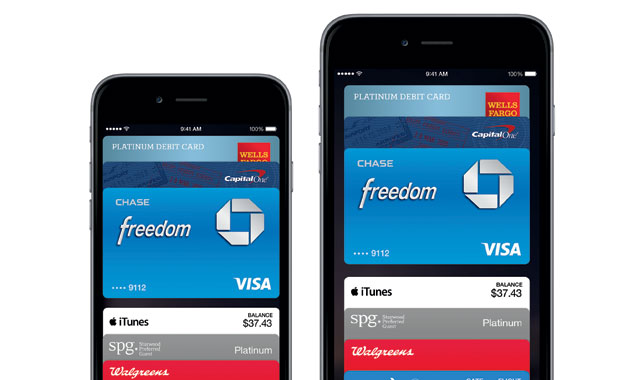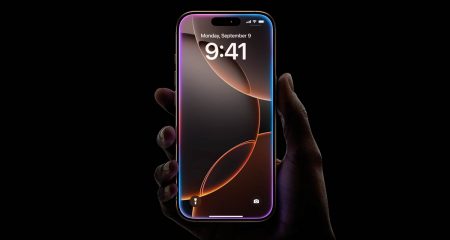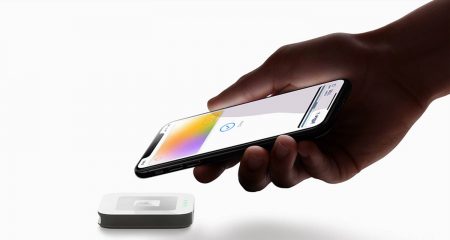 When Apple revealed its latest products to the adoring faithful last Tuesday, most people were focused on the gadgets. The new iPhone (it’s bigger) and the Apple Watch (it’s not just a rumour). But the potential game changer is really Apple Pay.
When Apple revealed its latest products to the adoring faithful last Tuesday, most people were focused on the gadgets. The new iPhone (it’s bigger) and the Apple Watch (it’s not just a rumour). But the potential game changer is really Apple Pay.
Sure, the bigger (and much bigger) iPhone is going to sell like hotcakes. And, yes, the Apple Watch (don’t dare call it the iWatch) is an important step for taking wearable computing mainstream. But both of these are yet more devices — something Apple is great at, but nothing particularly new.
Apple Pay, on the other hand, is a service, and one with global potential. It allows iPhone owners to pay for purchases in physical shops without swiping (or even carrying) credit cards. They simply “swipe” their phone at the till, touch the built-in fingerprint sensor on their phone and voila, payment done.
Apple Pay uses a combination of near-field communication (NFC) to connect to point-of-sale devices and Apple’s patented fingerprint reader (Touch ID) to authenticate payments. There are no signatures or Pin codes. No one else can use your phone to make a payment, short of cutting off one of your fingers. Carrying around a severed limb might attract unwanted attention at the department store.
Analysts have been anticipating a device-based payment system from Apple for years. The company has hundreds of millions of customers around the world. Because of the success of its iTunes and App Store services, it has active credit card details for a huge percentage of that customer base. Allowing people to pay using their phones was a natural progression.
The technology Apple chose for its payment system, while clever and well crafted, is not particularly surprising. The business model is. Instead of trying to cut banks and credit card companies out of the loop, Apple has worked closely with them to integrate with their existing networks.
As is often the case with Apple, it has negotiated something previously unthinkable: banks will pay it a small cut of each purchase, around 0,15%/transaction. Credit card companies and end users will pay nothing extra. This has not been officially confirmed by Apple, but the terms are quickly leaking out of the payments industry which is clearly thrilled by the new possibilities.
This strategy may prove a canny one. By positioning itself as a payment conduit rather than a payment provider, Apple does not antagonise or disrupt existing networks and companies. It can nestle into the existing ecosystem and scoop off value by making it quicker and more secure for its primary customers — iPhone owners — to pay for things.
Apple’s strategy no doubt came as a huge relief to large financial players who are increasingly nervous of being cut out of the market completely by a Silicon Valley upstart or a crypto currency like BitCoin. Apple has the cash and the raw power to build its own system from scratch, so cooperation was never a foregone conclusion.
The launch of Apple Pay also comes at an opportune moment in the American market. Plagued for decades by rampant credit card fraud, banks and payment networks are finally pushing to replace old-fashioned swipe cards with the encrypted chip-and-Pin or EMV cards that are standard in most other countries.

Apple Pay is an opportunity to leapfrog that transition. The system is not only quicker and more convenient for customers than chip-and-Pin systems, it is also safer. It uses the same encryption methods as EMV cards (so it is compatible with them), but fingerprint authentication adds hugely to overall security. Vendors will still need to upgrade to EMV-capable till points, but cards will soon be optional.
As with all of Apple’s services, Apple Pay is not about generating huge profits. Apple’s focus is still on making beautiful devices, and that will not change any time soon. What Apple Pay does is make it even harder to switch to a Samsung or a Nokia. Once you’ve stopped using credit cards, you’re never going to want to start using them again.
That said, Apple has a hit and miss record with services. iTunes and the App Store have proved big winners. iCloud and several abortive attempts at social networking have not. The world of point-of-sale payments is famously complex, arcane and full of hostile vested interests. Already, Walmart and Best Buy, two of the US’s largest chain stores, are refusing to play ball with Apple.
It is not even the first giant tech company to try this. Google has made several attempts to coax physical stores into integrating its Google Wallet and Google Checkout services, and has only met with failure. If a company with the smarts and ambition of Google has struggled, it’s not going to be plain sailing for Apple either.
Whether or not Apple Pay succeeds, it will help to change an industry in dire need of an upgrade. We have been carrying around square pieces of dumb, magnetised plastic since the 1970s. It’s time our payment methods entered the 21st century.
- Alistair Fairweather is chief technology officer for integrated advertising agency Machine
- This column was first published in the Mail & Guardian Online, the smart news source



